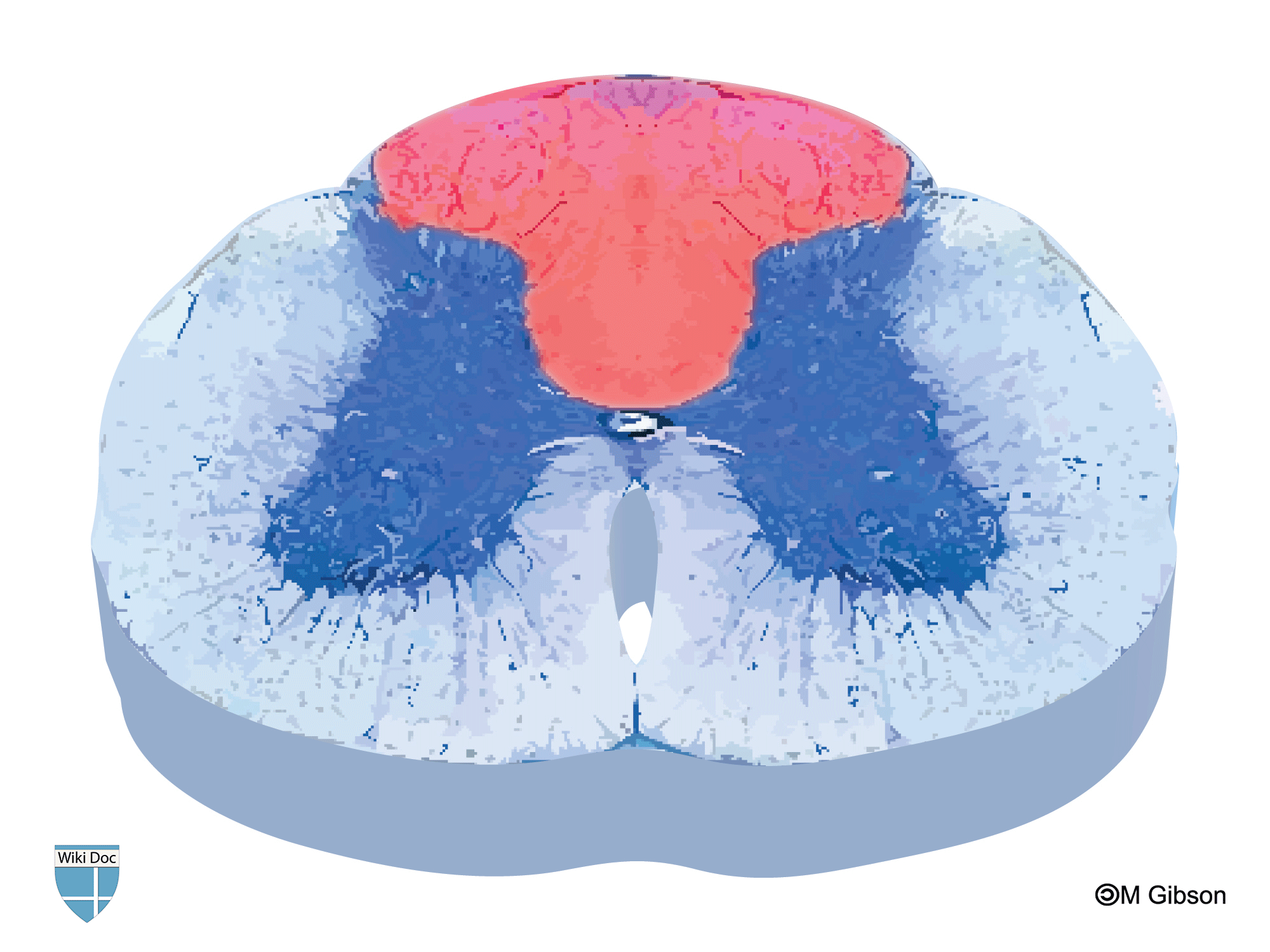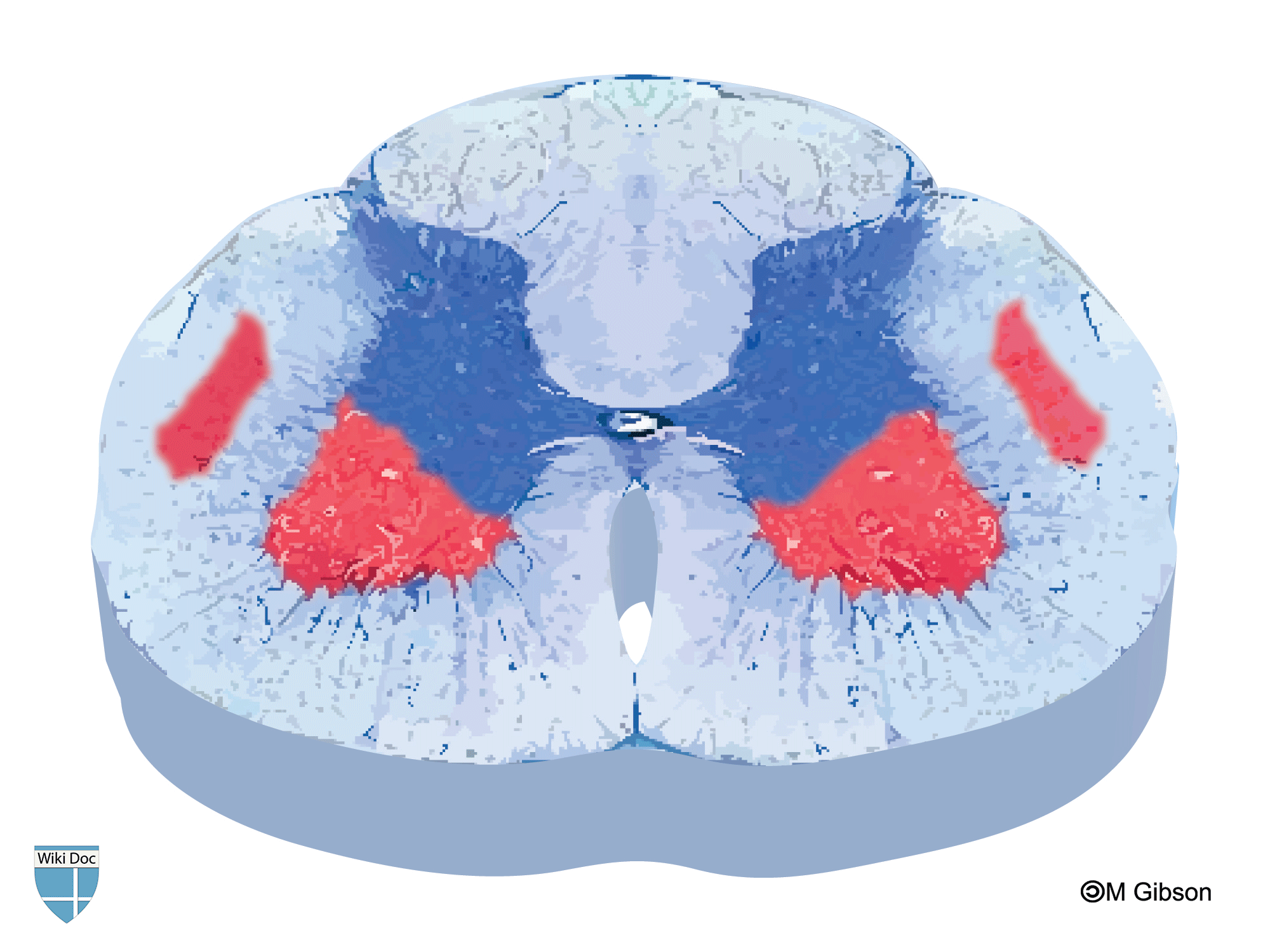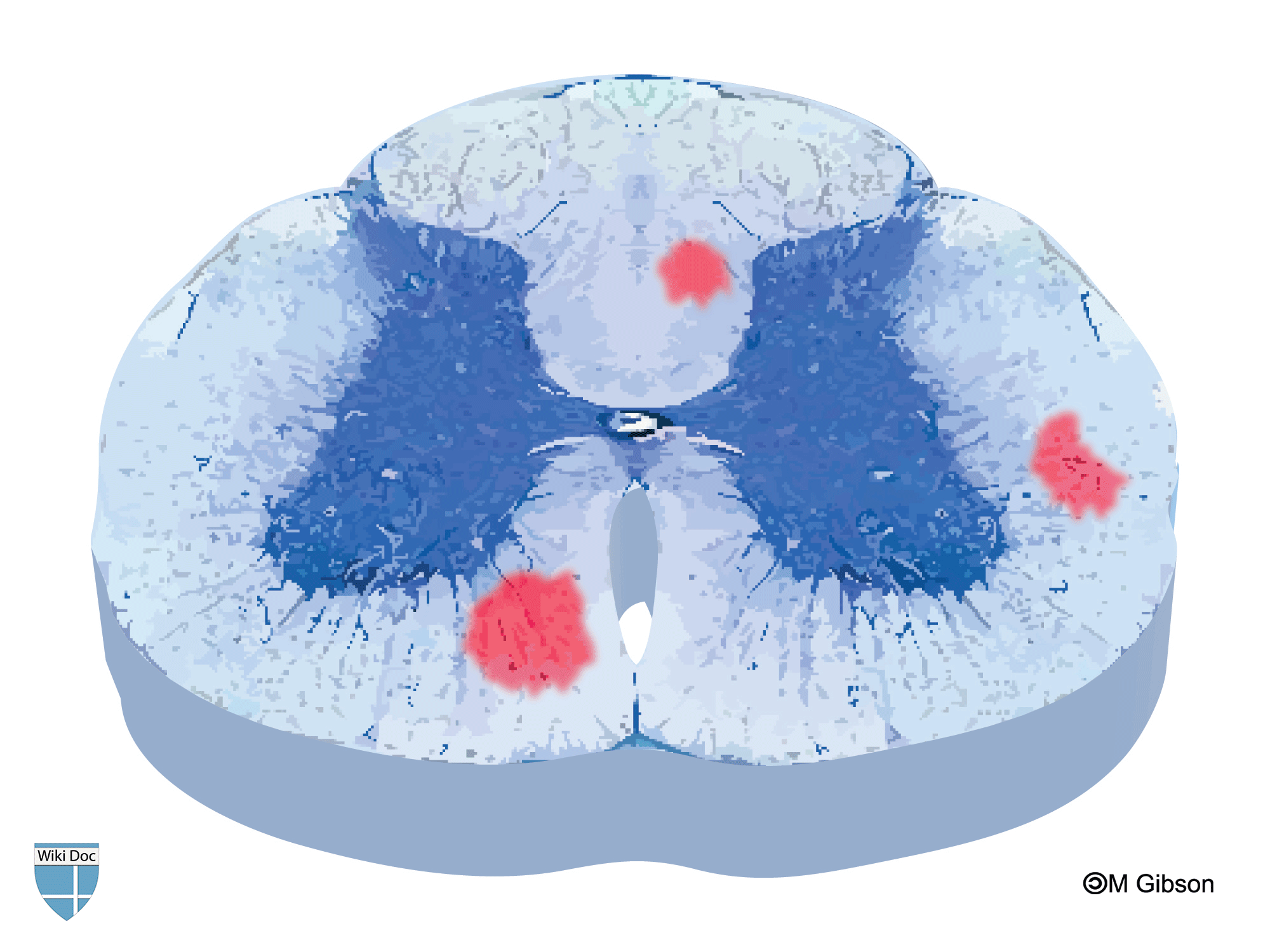WBR0576: Difference between revisions
Jump to navigation
Jump to search
Rim Halaby (talk | contribs) (Created page with "{{WBRQuestion |QuestionAuthor={{Rim}} |ExamType=USMLE Step 1 |MainCategory=Microbiology, Pathophysiology |SubCategory=Neurology, Infectious Disease |MainCategory=Microbiology,...") |
Rim Halaby (talk | contribs) No edit summary |
||
| Line 20: | Line 20: | ||
|MainCategory=Microbiology, Pathophysiology | |MainCategory=Microbiology, Pathophysiology | ||
|SubCategory=Neurology, Infectious Disease | |SubCategory=Neurology, Infectious Disease | ||
|Prompt=A 55 year old woman with poor medical follow-up is referred to the neurology clinic after she was found an abnormal neurological exam in a local healthcare fair. Upon questioning the patient reports several months of lower extremity numbness and imbalance. She also reports shooting pains in her abdomen and back which she thought were due to indigestion. On physical exam you notice bilateral miotic pupils, non-reactive to light, but reactive to accomodation. You also observe diminished reflexes in lower extremities, and a wide-based and slapping gait. As part of your work-up you order a lumbar puncture that shows WBCs=53/mcL and a positive RPR. Which of the following images depict the lesion(s) that can be seen in this patient? | |Prompt=A 55 year old woman with poor medical follow-up is referred to the neurology clinic after she was found an abnormal neurological exam in a local healthcare fair. Upon questioning the patient reports several months of lower extremity numbness and imbalance. She also reports shooting pains in her abdomen and back which she thought were due to indigestion. On physical exam you notice bilateral miotic pupils, non-reactive to light, but reactive to accomodation. You also observe diminished reflexes in lower extremities, and a wide-based and slapping gait. As part of your work-up you order a lumbar puncture that shows WBCs=53/mcL and a positive RPR. Which of the following images depict the lesion(s) that can be seen in this patient? | ||
|Explanation=Tabes dorsalis is a neurodegenerative disease seen in tertiary neurosyphilis that involves the posterior columns and roots of the spinal cord. The presentation is usually that of loss of proprioceptive sensations with progressive ataxia that can lead to paralysis if untreated. Lightning-like shooting pains are also common. Physical exam usually reveals a wide based gait, diminished reflexes and loss of vibration and position senses in the lower extremities. Argyll Robertson pupils that are baseline miotic pupils non-reactive to light but reactive to accommodation can also be seen. CSF usually shows leukocytosis >20 cells/mcL and positive VDRL or RPR. Tabes dorsalis is a rare disease since the antibiotic era although some cases can still be seen since the onset of this syndrome is 20-30 years after the initial infection. Treatment with penicillin stops the progression but cannot reverse the damage done. | |Explanation=Tabes dorsalis is a neurodegenerative disease seen in tertiary neurosyphilis that involves the posterior columns and roots of the spinal cord. The presentation is usually that of loss of proprioceptive sensations with progressive ataxia that can lead to paralysis if untreated. Lightning-like shooting pains are also common. Physical exam usually reveals a wide based gait, diminished reflexes and loss of vibration and position senses in the lower extremities. Argyll Robertson pupils that are baseline miotic pupils non-reactive to light but reactive to accommodation can also be seen. CSF usually shows leukocytosis >20 cells/mcL and positive VDRL or RPR. Tabes dorsalis is a rare disease since the antibiotic era although some cases can still be seen since the onset of this syndrome is 20-30 years after the initial infection. Treatment with penicillin stops the progression but cannot reverse the damage done. | ||
| Line 30: | Line 30: | ||
Chahine LM, Khoriaty RN, Tomford WJ, Hussain MS. The changing face of neurosyphilis. Int J Stroke. Apr 2011;6(2):136-43. [Medline] | Chahine LM, Khoriaty RN, Tomford WJ, Hussain MS. The changing face of neurosyphilis. Int J Stroke. Apr 2011;6(2):136-43. [Medline] | ||
|AnswerA=[[Image:Dorsal-Columns.gif|300px]] | |AnswerA=[[Image:Dorsal-Columns.gif|300px]] | ||
|AnswerAExp=This image depicts the involvement of the dorsal columns of the spinal cord that house the ascending proprioception and vibration sense pathways. The dorsal columns | |AnswerAExp=This image depicts the involvement of the dorsal columns of the spinal cord that house the ascending proprioception and vibration sense pathways classically seen in tabes dorsalis. The dorsal columns are also be involved in other syndromes including subacute combined degeneration seen with Vitamin B12 and Vitamin E deficiency. | ||
|AnswerB=[[Image:ALS.gif|300px]] | |AnswerB=[[Image:ALS.gif|300px]] | ||
|AnswerBExp=This image typically depicts spinal cord lesions of ALS that involve both descending corticospinal tracts, and the anterior horns. The involvement of both these structures is what leads to the combination of UMN and LMN symptoms seen in ALS. | |AnswerBExp=This image typically depicts spinal cord lesions of ALS that involve both descending corticospinal tracts, and the anterior horns. The involvement of both these structures is what leads to the combination of UMN and LMN symptoms seen in ALS. | ||
Revision as of 16:09, 2 October 2013
| Author | [[PageAuthor::Rim Halaby, M.D. [1]]] |
|---|---|
| Exam Type | ExamType::USMLE Step 1 |
| Main Category | MainCategory::Microbiology, MainCategory::Pathophysiology |
| Sub Category | SubCategory::Neurology, SubCategory::Infectious Disease |
| Prompt | [[Prompt::A 55 year old woman with poor medical follow-up is referred to the neurology clinic after she was found an abnormal neurological exam in a local healthcare fair. Upon questioning the patient reports several months of lower extremity numbness and imbalance. She also reports shooting pains in her abdomen and back which she thought were due to indigestion. On physical exam you notice bilateral miotic pupils, non-reactive to light, but reactive to accomodation. You also observe diminished reflexes in lower extremities, and a wide-based and slapping gait. As part of your work-up you order a lumbar puncture that shows WBCs=53/mcL and a positive RPR. Which of the following images depict the lesion(s) that can be seen in this patient?]] |
| Answer A | [[AnswerA:: ]] ]]
|
| Answer A Explanation | [[AnswerAExp::This image depicts the involvement of the dorsal columns of the spinal cord that house the ascending proprioception and vibration sense pathways classically seen in tabes dorsalis. The dorsal columns are also be involved in other syndromes including subacute combined degeneration seen with Vitamin B12 and Vitamin E deficiency.]] |
| Answer B | [[AnswerB:: ]] ]]
|
| Answer B Explanation | AnswerBExp::This image typically depicts spinal cord lesions of ALS that involve both descending corticospinal tracts, and the anterior horns. The involvement of both these structures is what leads to the combination of UMN and LMN symptoms seen in ALS. |
| Answer C | [[AnswerC:: ]] ]]
|
| Answer C Explanation | [[AnswerCExp::This image depicts isolated anterior horn injury usually seen in patients with poliomyelitis or Werdnig-Hoffman Syndrome (Floppy Baby Syndrome). Both of these diseases only cause LMN signs due to the lack of involvement of descending motor tracts.]] |
| Answer D | [[AnswerD:: ]] ]]
|
| Answer D Explanation | AnswerDExp::This image depicts multiple, non-patterned white matter lesions usually seen in patients with multiple sclerosis. |
| Answer E | [[AnswerE:: ]] ]]
|
| Answer E Explanation | AnswerEExp::This image is depicts an expanding central canal compressing adjacent tracts typically seen in syringomyelia. The anterior white commissure is the closest structure which leads to compression of the decussating spinothalamic tracts first. |
| Right Answer | RightAnswer::A |
| Explanation | [[Explanation::Tabes dorsalis is a neurodegenerative disease seen in tertiary neurosyphilis that involves the posterior columns and roots of the spinal cord. The presentation is usually that of loss of proprioceptive sensations with progressive ataxia that can lead to paralysis if untreated. Lightning-like shooting pains are also common. Physical exam usually reveals a wide based gait, diminished reflexes and loss of vibration and position senses in the lower extremities. Argyll Robertson pupils that are baseline miotic pupils non-reactive to light but reactive to accommodation can also be seen. CSF usually shows leukocytosis >20 cells/mcL and positive VDRL or RPR. Tabes dorsalis is a rare disease since the antibiotic era although some cases can still be seen since the onset of this syndrome is 20-30 years after the initial infection. Treatment with penicillin stops the progression but cannot reverse the damage done.
Educational Objective: Tabes dorsalis is disease seen in tertiary syphilis that leads to destruction of the dorsal columns and roots. References:
Lanska DJ. The suspension apparatus for tabes dorsalis. Neurology. Apr 12 1999;52(6):1295.
Chahine LM, Khoriaty RN, Tomford WJ, Hussain MS. The changing face of neurosyphilis. Int J Stroke. Apr 2011;6(2):136-43. [Medline] |
| Approved | Approved::No |
| Keyword | WBRKeyword::Tabes dorsalis, WBRKeyword::syphilis, WBRKeyword::dorsal columns |
| Linked Question | Linked:: |
| Order in Linked Questions | LinkedOrder:: |